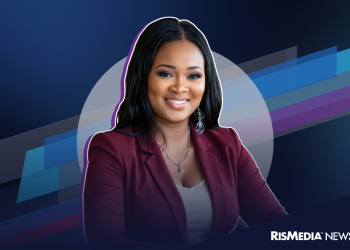Last week, we showcased my good friend Johnnie Johnson and his book “From Athletics to Engineering: 8 Ways to Support Diversity, Equity and Inclusion.” The week before, we talked about Russell Wilson and his philosophy on what it takes to win. Today, I want to shift gears to a trailblazing leader, Mary W. Jackson, the first African American female engineer at NASA.
Jackson began her professional life working in the segregated West Area Computing Unit of NASA’s Langley Research Center located in Hampton, Virginia. A brilliant mathematician and aerospace engineer, she led programs that promoted the hiring of women mathematicians, engineers, and scientists within NASA’s ranks. In 2019, Jackson was posthumously awarded the Congressional Gold Medal and in April 2020, NASA announced the agency’s Washington, D.C. headquarters would be named the Mary W. Jackson Nasa Headquarters. (Also of note, the previous year, the section of E Street SW that runs directly in front of NASA’s headquarters was renamed Hidden Figure Way, after the popular 2016 book by Margot Lee Shetterly, “Hidden Figures: The American Dream and the Untold Story of the Black Women Mathematicians Who Helped Win the Space Race” and the 2016 historical drama movie, “Hidden Figures.”)
Jackson’s story is remarkable, a tale of perseverance against the most difficult of odds and the most challenging of obstacles. The Hampton, Virginia native graduated with high honors from high school then earned two degrees (Math and Physical Science) from Hampton Institute in 1942. She next held a series of jobs—math teacher, receptionist, bookkeeper, and Army secretary at Fort Monroe—before finally working at the West Area Computing Unit.
After two years in that position, she transitioned to a mathematician role for an engineer named Kazimierz Czarnecki in what was called the Supersonic Pressure Tunnel. The -foot by 4-foot 60,000 horsepower wind tunnel could blast models with wind that was almost twice the speed of sound.
Jackson excelled in the position and was asked by Czarnecki to enter a prestigious training program that would allow her to go from NASA mathematician to NASA engineer. To make the switch, Jackson would have to not only enroll in difficult graduate-level math and physics courses but also do so at the then-segregated Hampton High School. For Jackson to participate in the training, she needed special permission from the City of Hampton to even sit in the classroom.
Unruffled by the protocol, Jackson received permission, finished the courses with distinction and got the promotion, making 1958 the historic year when NASA would officially employ its first Black female engineer.
So, what’s the message? Jackson’s motivation, as her peers have attested, was never to climb the ladder of success at NASA. For her, it wasn’t about the accolades or awards. Instead, her Wildly Important Goal was to ensure that the work she’d complete at NASA would positively contribute to the greater good and inspire other women and Black mathematicians, engineers, and scientists—or any previously “Hidden Figures” of history—to follow in her footsteps. Jackson proved, against all odds, that it is possible to dream bigger, remain hidden no longer and achieve extraordinary goals that are literally out of this world.
This article is adapted from Blefari’s weekly, company-wide “Thoughts on Leadership” column from HomeServices of America.












